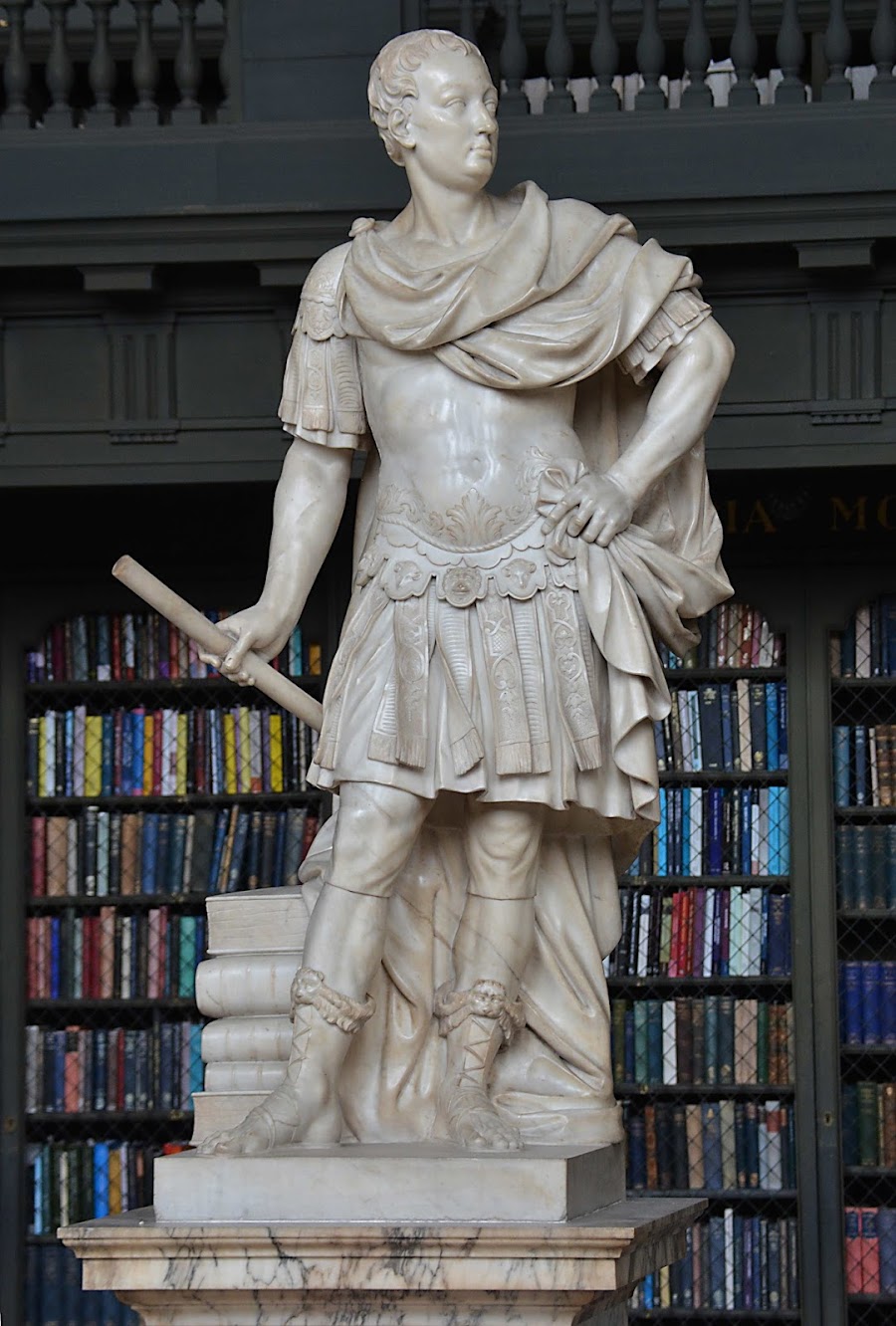Is this a bust of Sir Thomas Parker, The First Earl of Macclesfield (1697 - 1764).
by Michael Rysbrack?
A Bust of Macclesfield was modelled by J. M. Rysbrack (see - George Vertue, Notebooks, Wal.
Soc., XXII, 1934, p 56, in 1732), a marble version not then known.
A cast,
bare-headed with drapery round shoulders, in the Shirburn Library sale,
Christie’s, 1 December 2005, lot 71. (images below).
The images below have been lifted from the article in the Georgian Group Journal. Vol XVII 2009 pages 19 - 40. by David Wilson entitled A Very Early Portrait by Michael Rysbrack
I have attempted but have not been able to contact David Wilson.
https://georgiangroup.org.uk/wp-content/uploads/2020/10/GGJ_2009_02_WILSON.pdf
I have recently found myself looking at the various forms of Socles used by some English Sculptors in the 18th Century.
This has evolved from research into a very fine marble portrait bust of a young lady on a turned socle with what can best be described as an eared support below the bust now believed to be an unrecorded bust the bluestocking and sculptor Anne Seymour Damer by Joseph Nollekens. (below).
The eared support and turned socle are very close to the so called bust of Macclesfield, which appears to have first been used in England after Nollekens return from Rome in 1770 where he had been since 1761 - for at least some of his time in Rome was spent restoring antiques and working on portraits for Cavaceppi at his workshops/ studios on the Corso.
................
Anne Seymour Damer attributed to Nollekens, 1780's.
Nollekens used a socle unique to him butt based on the form used by the Roman sculptor and restorer Bartolomeo Cavaceppi. which in turn was adapted from antique precedents.
https://bathartandarchitecture.blogspot.com/2025/01/a-very-fine-marble-bust-of-lady-here.html
https://bathartandarchitecture.blogspot.com/2025/01/the-portraits-of-anne-seymour-damer.html
For The Nollekens Socle with the Eared support to the bust see -
https://bathartandarchitecture.blogspot.com/2024/11/some-earlier-nollekens-busts.html
.............................
The Bartolomeo Cavaceppi Type Socle.
Catharina Maria Møsting (1714-1770). Gräfin /Countess Schulin.
Bartolomeo Cavaceppi (1719 - 99).
Life Size Marble Bust.
1768.
Schloss Frederiksborg, Copenhagen, Denmark.
Image courtesy Johnny Tomasso.
https://bathartandarchitecture.blogspot.com/2025/01/a-remarkable-bust-by-cavaceppi-in.html
for more on the socles of Cavaceppi's busts see -
https://bathartandarchitecture.blogspot.com/2024/11/cavaceppi-and-eared-socle.html
There are numerous examples of ancient bust which were restored in Cavaceppi's very large atelier on the Corso in Rome.
https://bathartandarchitecture.blogspot.com/2024/11/cavaceppi-and-eared-socle.html
..................................
Some time later I revived ongoing researches into a a very fine copy of Anima Dannata proposed as by Joseph Wilton by Offered by Christie's 7 December 2023.
https://www.christies.com/en/lot/lot-6458288
I now consider to be have been sculpted by Louis Francois Roubiliac, given the evidence of the Roubiliac type socle. This socle is (almost) unique to the busts of Roubiliac. There is a marble bust of Lord Chesterfield of 1757 by Joseph Wilton in the British Museum which has a similar socle with a bronze plaque on the front.
It is quite possible that the carving of the socles were either made in the workshop or carved by sub contractors.
For a close look at the Roubiliac Type Socle see -
https://bathartandarchitecture.blogspot.com/2025/03/louis-francois-roubiliac-joseph-wilton.html
In July 1752, Roubiliac travelled with the portrait painter Thomas Hudsons to Rome, where he
is said perhaps to have exclaimed that the sculpture of Bernini made his own look
‘meagre and starved, as if made of nothing but tobacco pipes’.
............................
The Putative Plaster Bust of Sir Thomas Parker
The First Earl of Macclesfield (1697 - 1764).
If this is the bust mentioned by George Vertue in 1724 (and I suspect that it isn't) Macclesfield would have been aged 27.
I suspect that this is a much later cast (1770's - 1780's) of an as yet unidentified bust by Nollekens.
In the post below I look at the Nollekens type socle used frequently but not exclusively until the 1790's.
The Nollekens socles had eared supports with a slightly convex panel.
https://bathartandarchitecture.blogspot.com/2024/11/some-earlier-nollekens-busts.html
































































